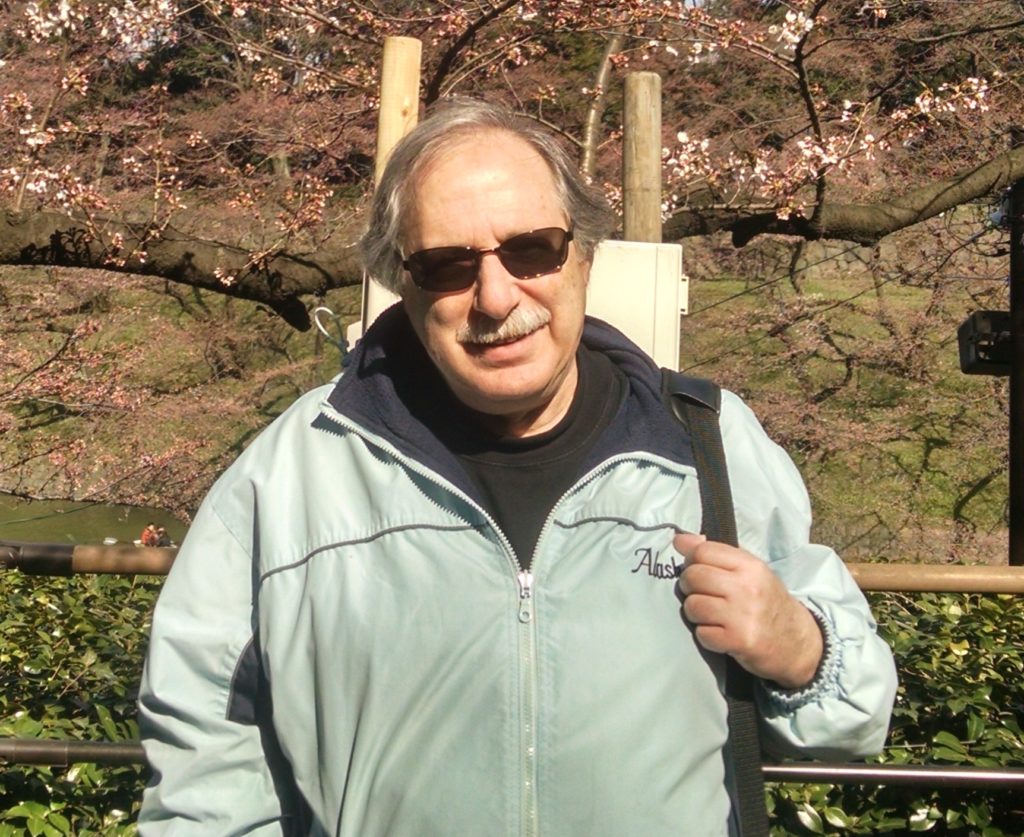
Peter Harrison’s The Territories of Science and Religion: A New Peter Principle
By Bernie Lightman
Peter Harrison’s new book,[i] based on the Gifford Lectures that he delivered at the University of Edinburgh in 2011, is essential reading. It is the most important study of the history of science and religion since the publication in 1991 of John Brooke’s Science and Religion: Some Historical Perspectives, in which Brooke laid out what has been called the “complexity thesis.” That thesis has been the principle guiding almost all scholarship in the history of science and religion since 1991, so for at least the last 25 years. In brief, Brooke argued (and he was by no means the first) that the conflict thesis, the notion that science and religion have been at war throughout history, was fatally flawed, and that any single thesis had to be rejected as the basis of a historiographical model. Instead, scholars had to conduct empirical research on the period they were examining to determine the nature of the relationship between science and religion. Brooke’s book inspired scholars to go back and look again at key moments in the past in order to find more complicated patterns than the simplistic emphasis on conflict that had reigned in earlier studies.
Like Brooke, Harrison has provided us with a valuable big picture. Although the move to finely textured local studies based on thick description that has dominated historical work since the 1980’s has produced first-rate scholarship, it has inhibited the consideration of big pictures. The complexity thesis reinforced that tendency. But we need big pictures to give our historical narratives a shape, and to be able to communicate them effectively to public audiences. Harrison’s big picture is grounded on the principle that science and religion, which began as interior qualities, such as piety in the case of religion or a mental discipline in the case of science, were increasingly seen as adherence to bodies of doctrine or knowledge after the Protestant Reformation and the rise of experimental natural history. Harrison asserts that:
“with the increasing frequency of the expressions ‘religion’ and ‘the religions’ from the sixteenth century onward we witness the beginning of the objectification of what was once an interior disposition. Whereas for Aquinas it was the ‘interior’ acts of religion that held primacy, the balance now shifted decisively in favor of the exterior” (p. 11).
Hence the subtitle of this post, “A New Peter Principle.” The term originally comes from Laurence J. Peter’s 1968 book The Peter Principle, which argued that in a hierarchy, every employee is promoted until they finally reach their level of incompetence. Harrison is in no way incompetent so I am not using the term sarcastically. The term is appropriately applied in this instance since the new Peter Principle is a brilliant insight that deserves a special designation. John Brooke has his “complexity thesis,” Harrison should have his “Peter Principle.” I will return at the end to a comparison between Brooke and Harrison, but I am now going to focus in on chapter six of Harrison’s book, which gives the reader his take on the nineteenth century. It is here that some minor problems emerge with the principle.
This is the penultimate chapter, just before the epilogue. Here Harrison wants to show us how, over the course of the nineteenth century, natural history and natural philosophy transformed into what we now know as natural science. The nineteenth century is therefore key to Harrison’s entire argument about the development of science.
“Modern religion had its birth in the seventeenth century; modern science in the nineteenth” (p. 147).
This is also the period when the transformation of science and religion into bodies of doctrine or knowledge reach their climax. During the first six decades of the nineteenth century, Harrison argues, natural theology provided an overarching theological framework for natural history and natural philosophy. Natural theology was taught in the universities, was part of the popularization of science, and was a dominant theme in museums. The method of induction was thought of as a divinely sanctioned mode of reasoning that characterized both true religion and genuine science. The idea of natural theology as an inductive science served to reinforce the modern propositionally driven understanding of religion. At the same time, natural philosophy and natural history were seen to have a morally beneficial impact on practitioners.
But, Harrison argues, this all changes in the last four decades of the nineteenth century. Moral and theological elements that had previously been integral to the study of nature and the persona of the naturalist were systematically rejected as modern natural science demarcated its new territory and sought to distinguish itself from natural philosophy and natural history. The new natural science was reconstructed through a threefold process, and here I quote Harrison:
…first, a new identity—the scientist—is forged for its practitioners; second, it is claimed that the sciences share a distinctive method, one that excludes reference to religious and moral considerations; and, third, following on from this, the character of this new science is consolidated by drawing sharp boundaries and positing the existence of contrast cases (pp. 159-160).
The last process “was accompanied by the construction of a mythical past in which the newly crafted boundaries assume an ahistorical timelessness and tales of perennial conflict between science and religion are fashioned to reinforce the contemporary lines of demarcation” (p. 160). So here we get an intriguing explanation for the creation of the historiography of conflict in the last quarter of the nineteenth century depicted in the American chemist and historian John William Draper’s History of the Conflict Between Religion and Science (1874) and in the two-volume History of the Warfare of Science with Theology in Christendom (1897) by Andrew Dickson White, the inaugural president of Cornell University. In these two famous books Draper and White invented the myth that science and religion had been in conflict throughout history.
The upshot of all of this is that the new identity of the scientist as a professional reduces the clerical membership of scientific societies. Further, the new purely naturalistic scientific method is seen as having applicability across all modes of thought. Science is seen as offering a unique and privileged access to truth. This puts religion on the defensive, as it now requires scientific justifications for its legitimacy.
In my judgement, Harrison is right about the general contours of the nineteenth century story. I have to admit I was wondering if this part of the book might be the weakest, since the nineteenth century is not his area of expertise. This was not the case. But I want to offer some refinements that could usefully be made, especially if Harrison plans to write an enlarged version of this book. I think he should write a book that is at least two and half times the size of the current one so that he can deal with details that he had no time to cover. I will focus in on three issues where more thought may be needed on how the Peter Principle plays out in the nineteenth century: 1) Darwin’s role in all of this; 2) the nature of professionalization; and 3) the pace of secularization.
Harrison is too coy when it comes to assigning Darwin and evolutionary theory a role in his story about the nineteenth century. The key shift from the religiously informed natural history and natural philosophy to the new natural science is sometimes referred to as taking place during the middle of the century. In his discussion of natural theology, Harrison seems to accept Robert Young’s estimation that natural theology provided a common intellectual context for science in the first six decades of the century (p. 152), though he realizes that the situation was more complicated than that. But locating a turning point at the end of the 1850’s implies that the publication of Darwin’s Origin of Species in 1859 played an important role in the creation of natural science. Yet there are only five references to Darwin in the book and none of them really come to grips in a substantial way with Darwin’s role. Perhaps Harrison wanted to side step this thorny issue. Was there a Darwinian revolution? What is the relationship between that and the decline of natural philosophy and natural history? Darwin saw himself as a natural historian, but it is clear that his theory of natural selection had some negative impact on the fortunes of natural theology. I don’t think that Harrison can avoid dealing with this issue. I have my own thoughts about it—that the controversy over the Origin provided an opportunity for Huxley and his allies to professionalize science in the way Harrison says. But is this how Harrison sees it?
This leads us to the second question on professionalization. Historians of Victorian science are still trying to come to a consensus about what professionalization meant to historical actors, and if that term is really the best one to use. Historian of science Ruth Barton, for example, has pointed out that we can’t simply juxtapose amateurism and professionalization. Founded in 1864 as a private, informal society where members could exchange ideas on literature, politics, and science over dinner, the X-Club included the biologist T. H. Huxley, the physicist John Tyndall, and the chemist Edward Frankland, as well as other would-be professional scientists. The X-Club is usually identified as the force behind professionalization. But it also contained amateurs like the banker, anthropologist, and entomologist John Lubbock.[i] Jim Endersby, a historian of biology, has shown that the botanist Joseph Dalton Hooker, a key ally of Huxley’s and another member of the X-Club, was contemptuous of professions and professionals.[ii] So I recommend that Harrison treat the notion of professionalization more carefully in future work. He tends to use the term to designate a concept more in line with older scholarship.
Third, and finally, I wonder if Harrison has overemphasized the decline of natural theology in the second half of the nineteenth century. I think that the process whereby moral and theological unifying principles are removed from science took much longer, and indeed, continues to some extent today. Popularizers of Victorian science who updated natural theology in the post-Darwinian environment were tremendously popular with the Victorian reading public. Some, such as Ebenezer Brewer and John George Wood, sold far more copies of their books than Darwin or Huxley.[i] Also, important nineteenth century scientific figures such as Kelvin and Maxwell were still working within the religious framework of natural philosophy in the latter part of the century. So were numerous Cambridge and Oxford professors. Even amongst the scientific naturalists, moral and theological principles were located within science. Herbert Spencer’s insistence that moral principles were bound up in the evolutionary process and that the Unknowable, a shadowy deity whose existence he affirmed in his First Principles (1862), guided the process towards a purposeful end, were influential worldwide and not just in Britain.[ii] None of these three refinements are fatal to the argument presented in chapter 6, but they need to be integrated into how the Peter Principle is applied to the nineteenth century.
Let me now come back to Brooke’s Science and Religion, so I can ask some questions about how it compares to The Territories of Science and Religion. This will help raise some larger issues. Harrison acknowledges in the beginning of the preface that his book “cannot be a straightforward history of the relations between science and religion” since his argument is that these two ideas are “relatively recent conceptions that emerged in the West over the course of the past three hundred years” (p. ix). Would Harrison see John Brooke’s book as a straightforward history of the relations between science and religion? If yes, would he discount what Brooke says about science and religion before the 17th century? Is Harrison really saying that we can’t really write a book about the relationship between science and religion before the 18th century? Or that if we do we must recognize that what we are talking about is not really science and religion as currently conceived, but something very different?
Another point concerns Brooke’s complexity thesis in general. Does Harrison see his argument as aligning with Brooke’s approach to the history of the relationship between science and religion? In what way, if at all, does the Peter Principle intersect with the complexity thesis? In one of Brooke’s later works, co-authored with Geoffrey Cantor, he recommends, in a moment of postmodern enthusiasm, that we avoid all “master-narratives,” as he and Cantor intend to tell many different stories about science and religion in Reconstructing Nature.[iii] (This was a book, by the way, based on their Gifford Lectures, just as Harrison’s book is based on his.) Is Harrison presenting a master-narrative in Territories? If so, is it a master-narrative that manages to avoid the pitfalls of previous master-narratives based on a simplistic model? In sum, how does Harrison view the relationship between his work and Brooke’s? Does Harrison see Territories as demanding a break with the old complexity thesis and the call for a very different way of studying science and religion?
However Harrison chooses to answer these questions, and whatever the minor problems with the chapter on the nineteenth century, it is clear that the Territories is set to transform the entire landscape grounding the study of the historical relationship between science and religion.
This post is based on a paper originally given by the author at the Canadian Society for the History and Philosophy of Science annual meeting at Calgary, May 2016.
[i] Bernard Lightman, Victorian Popularizers of Science (Chicago: University of Chicago Press, 2007).
[ii] Bernard Lightman (Ed.), Global Spencerism: The Communication and Appropriation of a British Evolutionist (Leiden: Brill, 2015).
[iii] Geoffrey Cantor and John Brooke, Reconstructing Nature: The Engagement of Science and Religion (Oxford: Oxford University Press, 1998), 22.
[i] For a review of the literature on professionalization see: Bernard Lightman, “Introduction,” Evolutionary Naturalism in Victorian Britain: The ‘Darwinians’ and their Critics (Burlington, VT: Ashgate, 2009), xii-xiii.
[ii] Jim Endersby, “Odd Man Out: Was Joseph Hooker an Evolutionary Naturalist?” in Victorian Scientific Naturalism, ed. Bernard Lightman and Gowan Dawson (Chicago: University of Chicago Press, 2014), 161-169.
[i] Peter Harrison, The Territories of Science and Religion (Chicago and London: University of Chicago Press, 2015).

Bernie Lightman is Distinguished Research Professor in the Humanities Department at York University. His research focuses on the cultural history of Victorian science. Among his most recent publications are the edited collections Global Spencerism, A Companion to the History of Science, and Science Museums in Transition (co-edited with Carin Berkowitz). For more see his Research Profile


